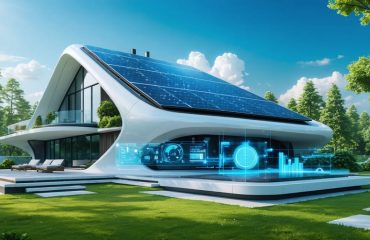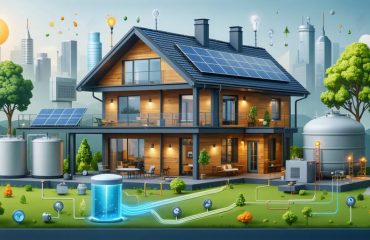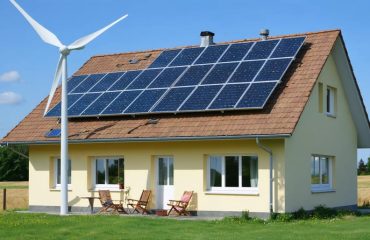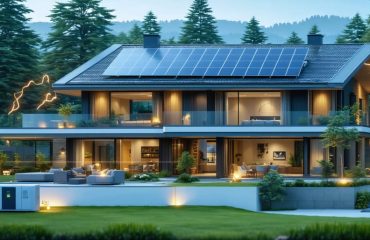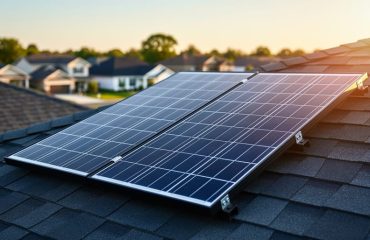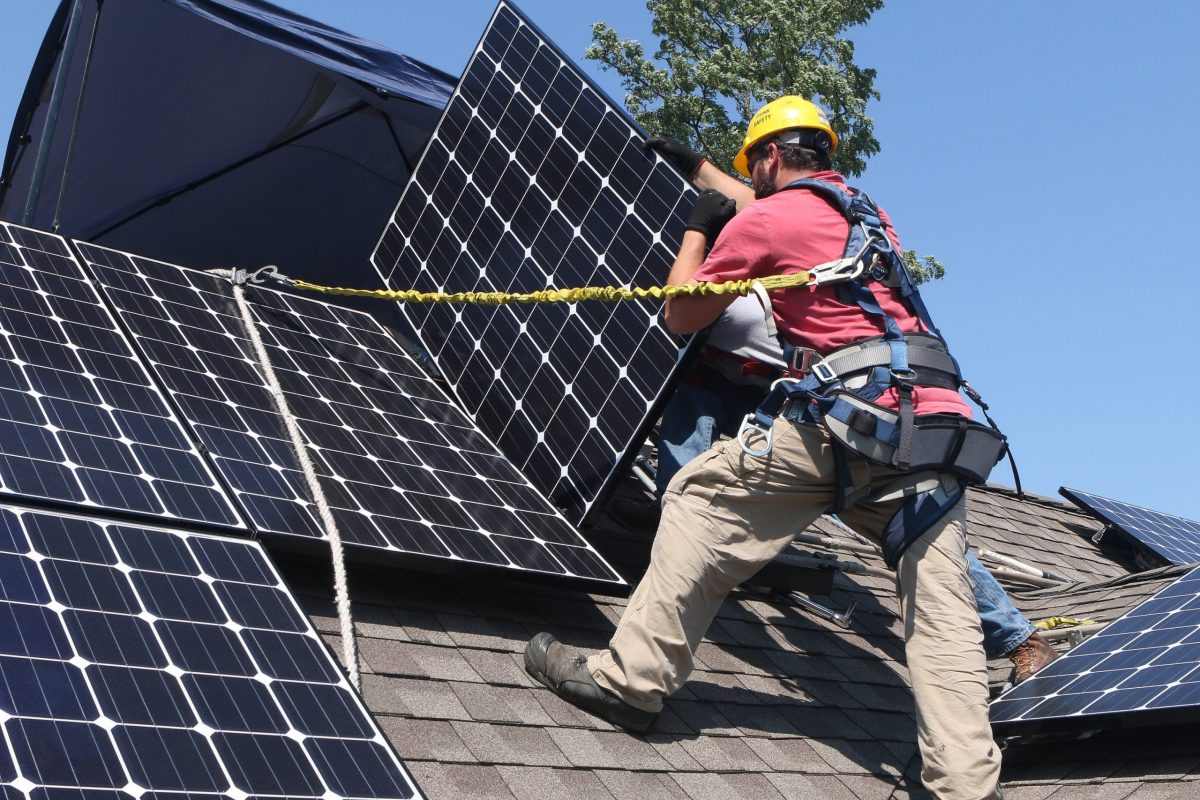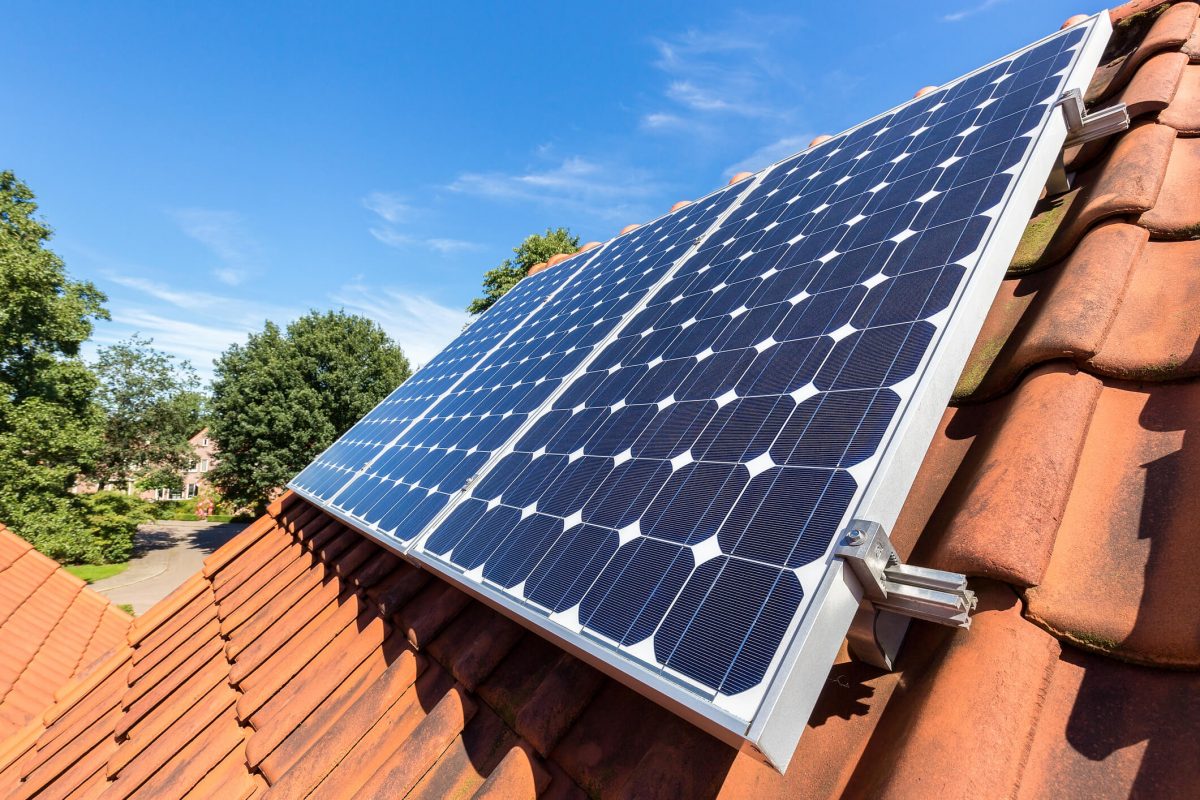Wind energy is transforming how we think about powering our homes and achieving true energy independence. While solar panels often steal the spotlight in residential renewable energy conversations, wind power plays a crucial role in the broader clean energy ecosystem—and understanding it can help you make smarter decisions about your own energy future. Whether you’re already harnessing the sun’s power or exploring your first renewable energy investment, wind energy offers surprising benefits that complement and enhance your path to energy independence.
From its impressive growth trajectory to its unique ability to generate power 24/7, wind energy addresses many of the limitations homeowners face when relying solely on one renewable source. The technology has evolved far beyond massive turbines dotting rural landscapes—today’s innovations are bringing wind power closer to residential applications than ever before. These five fascinating facts reveal how wind energy fits into your energy independence strategy, how it works alongside solar technology, and why understanding this renewable resource matters even if you’re primarily focused on solar solutions. The future of home energy isn’t about choosing between renewables—it’s about understanding how they work together to keep your lights on and your energy bills down.
Wind Energy Works Around the Clock (Even When Solar Doesn’t)
One of the biggest misconceptions about renewable energy is that you’re stuck in the dark when the sun goes down. While it’s true that solar panels need sunlight to generate electricity, wind turbines keep spinning and producing power around the clock—especially during nighttime hours when winds tend to pick up. This natural rhythm makes wind energy the perfect complement to solar power.
Think of it this way: solar panels work their hardest during sunny daytime hours, while wind turbines often produce their peak output at night and during overcast weather. When clouds roll in or the sun sets, wind energy fills the gap. This tag-team approach means you’re generating clean power virtually 24/7, bringing you closer to true solar energy independence when combined with other renewable sources.
For homeowners exploring energy independence, this complementary relationship is crucial. Rather than relying on a single energy source with natural limitations, combining wind and solar creates a more reliable renewable energy system. Many coastal and rural areas experience consistent nighttime breezes, making small residential wind turbines an increasingly attractive option alongside rooftop solar panels.
The financial benefits add up too. By generating power when solar can’t, wind energy reduces your reliance on expensive grid electricity during peak evening hours when families typically use the most energy. This means lower utility bills year-round and greater protection from rising energy costs. The combination doesn’t just make environmental sense—it makes dollars and cents for your household budget.
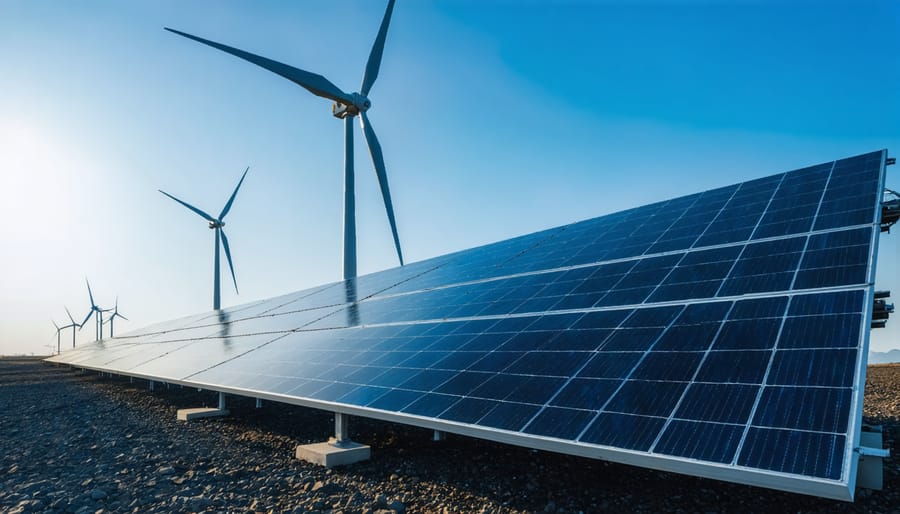
The Grid Runs on More Wind Than You Think
If you think wind energy is just a nice addition to America’s power supply, prepare to be amazed. Wind power has quietly become one of the country’s major electricity sources, proving it’s far more than an experimental technology.
As of 2023, wind energy generates roughly 10% of all electricity in the United States. That’s enough to power over 40 million homes every year. To put that in perspective, wind produces more electricity than nuclear power in seven states and has become the leading renewable energy source in 15 states across the country.
The real eye-opener? In states like Iowa and Kansas, wind energy now accounts for over 40% of electricity generation. These aren’t small pilot programs—this is the backbone of their power grids, operating reliably day after day. Texas alone generates more wind energy than most countries, with over 30,000 megawatts of installed capacity keeping the lights on for millions.
What makes these numbers even more impressive is wind energy’s reliability record. Modern wind farms maintain availability rates above 95%, meaning they’re ready to generate power whenever the wind blows. Advanced forecasting technology allows grid operators to predict wind generation up to 72 hours in advance, integrating seamlessly with other power sources.
The myth that wind is unreliable or insignificant simply doesn’t match reality. Major utilities and grid operators have successfully incorporated massive amounts of wind power without compromising reliability. For homeowners exploring energy independence, understanding wind’s proven track record helps paint the complete picture of how renewable energy is already transforming our power supply—whether you’re generating it yourself through solar panels or benefiting from it through your utility company.
Small Wind Turbines Can Actually Work for Homes
You might be surprised to learn that residential wind turbines aren’t just for rural farms anymore. Modern small wind turbines have become increasingly practical for homeowners, especially those already investing in solar panels or looking to maximize their energy independence.
Here’s the reality: a small wind turbine for residential use typically ranges from 400 watts to 10 kilowatts, with most homeowners finding the sweet spot around 1-5 kilowatts. These systems cost between $3,000 and $8,000 per kilowatt installed—generally more expensive than solar panels upfront. However, wind energy shines (literally) when the sun doesn’t. Wind turbines generate power at night and during cloudy weather, making them an excellent complement to solar rather than a replacement.
The key question is whether wind makes sense for your property. You’ll need consistent wind speeds of at least 10 mph, adequate space (typically at least one acre), and local zoning that permits turbines. If you live in a particularly windy area, your turbine might produce energy more consistently than solar panels alone.
The financial math works best when you combine both technologies. Solar handles daytime energy production, while wind turbines keep generating power after sunset and during storms. This combination can dramatically reduce or eliminate your dependence on the grid, particularly if you add battery storage to the mix.
Before investing, check for local and federal incentives—the federal Investment Tax Credit applies to small wind systems just as it does for solar. Some states offer additional rebates that can significantly reduce your upfront costs. The bottom line? While wind turbines require more consideration than solar panels regarding location and regulations, they represent a legitimate path toward complete energy independence for the right homeowner.
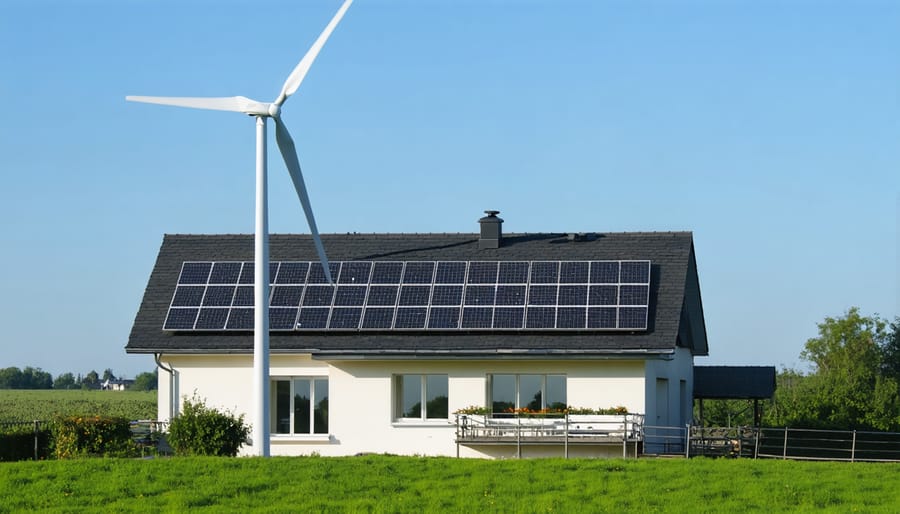
Wind Energy Storage Makes Both Wind and Solar Better
Here’s a game-changer many people don’t realize: energy storage systems don’t just work with one type of renewable energy—they work with all of them. When you pair home battery storage with both wind and solar power, you create a powerhouse combination that covers your energy needs around the clock.
Think of it this way: solar panels produce energy during sunny days, while wind turbines generate power during breezy conditions—which often happen at night or during cloudy weather when your solar panels aren’t working at full capacity. By storing excess energy from both sources in batteries, you’re essentially creating your own personal power grid that works 24/7.
This complementary relationship means you’re capturing energy year-round, regardless of weather conditions. Windy winter months when solar production dips? Your wind energy picks up the slack. Sunny summer days with calm air? Solar takes the lead. The battery acts as your energy savings account, storing surplus power from either source for use whenever you need it.
For homeowners exploring energy independence, this hybrid approach significantly reduces reliance on the traditional power grid. You’re not putting all your eggs in one basket—you’re diversifying your energy portfolio just like you would with financial investments. The result? Lower electricity bills, fewer power interruptions, and greater peace of mind knowing you have multiple renewable sources working together to keep your lights on and your home running smoothly, no matter what Mother Nature throws your way.
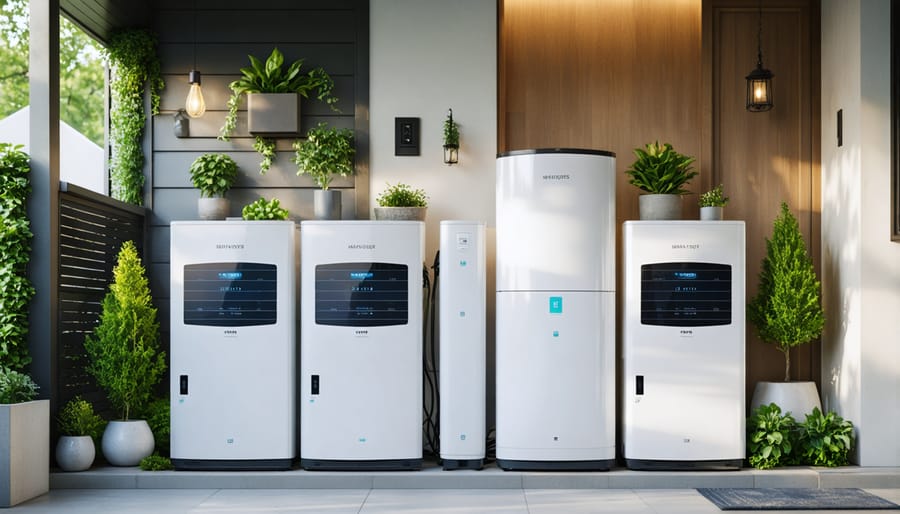
Your Solar Investment Supports Wind Energy Growth
When you choose solar panels for your home, you’re doing more than just reducing your own electricity bills—you’re casting a vote for the entire renewable energy sector. Here’s the exciting part: your investment in solar actually helps wind energy grow stronger, and vice versa.
Think of it this way: every solar installation adds to the demand for better battery storage, smarter electrical grids, and more flexible energy policies. These improvements benefit all renewable energy sources, including wind farms. When utilities see homeowners embracing solar, they’re more motivated to invest in large-scale renewable projects like wind turbines to meet growing clean energy expectations.
Your solar panels also contribute to what experts call “grid modernization.” As more homes generate their own power, utility companies upgrade their infrastructure to handle two-way energy flow. These same upgrades make it easier to integrate wind energy into the power grid, especially since wind generates most of its electricity at night when solar panels are dormant—creating a perfect partnership.
The policy changes driven by solar adoption create ripples throughout the renewable energy landscape. State renewable energy mandates, federal tax incentives, and net metering policies that benefit solar homeowners also make wind projects more financially viable. When legislators see constituents embracing rooftop solar, they’re more likely to support wind farm development and other clean energy initiatives.
Bottom line: your decision to go solar isn’t just about your home—it’s an investment in a cleaner, more diverse energy future. You’re helping build the infrastructure and political will that makes wind energy, along with other renewable sources, increasingly accessible and affordable for everyone.
Understanding these fascinating aspects of wind energy opens up new perspectives on how renewable energy works—and how different technologies can work together to power your home more sustainably. While wind turbines might not be practical for every backyard, the lessons from wind energy’s growth apply directly to your own energy independence journey.
The same grid innovations that make wind energy viable—like smart inverters and energy storage systems—also make rooftop solar more effective and reliable. When you understand how renewables complement each other on a large scale, you’re better equipped to design an energy solution that works for your specific situation.
Ready to take control of your energy future? Exploring solar panels paired with battery storage gives you the independence and cost savings that wind energy demonstrates on a larger scale. Your home may not need a wind turbine, but it can absolutely benefit from the same renewable energy principles—clean power, lower bills, and freedom from unpredictable utility rates.


